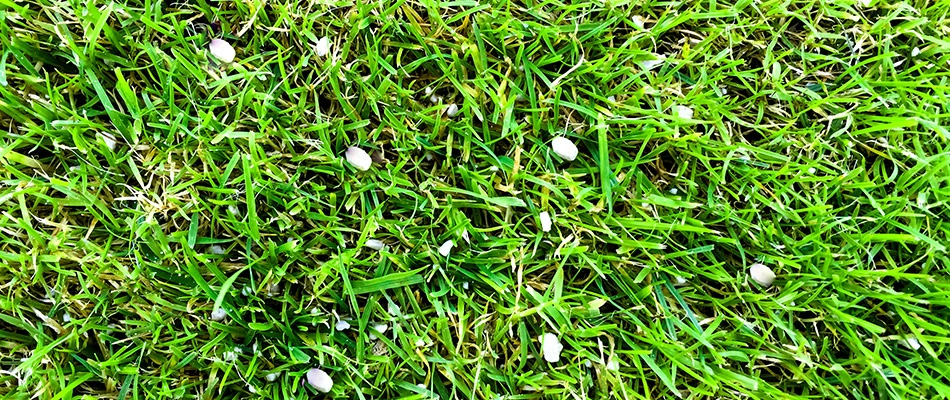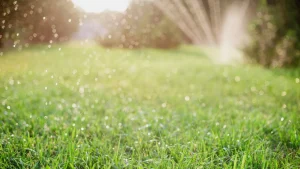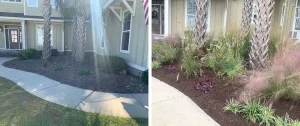The ultimate goal of every homeowner for their lawn is to ensure it is healthy and lush. One way to achieve this is through regularly fertilizing your lawn so it can receive the correct amount of essential nutrients. Timing, the product type, and the amount of fertilizer all vary depending on the type of grass you have. The instructions for post-application also vary depending on the type of fertilizer you apply! With so many common questions among property owners, we have decided to compile a list of those FAQs and their answers. Continue reading to learn more about lawn fertilization and how to maximize its results.
When should I fertilize my warm-season lawn?
Applying fertilizer on your lawn should always be done during your grass’s growing season. For warm-season grass like Bermuda and St. Augustine, the growing season is in the summer. We encourage that you wait until the grass has broken out of dormancy and is actively growing before applying fertilizer. Treating your warm-season grass with fertilizer in NC should be done no earlier than April to avoid lawn disease and other problems down the road.
How much fertilizer is the right amount?
The right amount of fertilizer is crucial to protect your lawn and the environment. Too much fertilizer can be washed away towards creeks and streams, which is harmful to aquatic life. It can also cause negative health effects on your lawn such as “burning” your grass. We base the amount of fertilizer we apply on the type of grass we are treating.
- Centipede grass - This is a low-maintenance turf that requires one to two pounds of fertilizer per 1,000 square feet once established. Centipede grass takes a long time to establish but will need only a little amount of fertilizer once it has fully grown.
- St. Augustine grass - This is a fast-growing grass that requires four applications throughout the year. It's important not to exceed more than 4 pounds of nitrogen per 1,000 square feet annually.
- Bermuda grass - Bermuda grass is a drought-tolerant turf that needs up to five pounds of nitrogen per season, and then another pound of nitrogen per 1,000 square feet applied every four to six weeks after the grass greens up.
- Zoysia grass - This is a type of grass that requires three pounds of fertilizer per 1,000 square feet. If too much fertilizer is applied, some Zoysia cultivars accumulate thatch quickly.
Should I water my granular fertilizer in?
Yes, granular fertilizers should be watered in after the application to ensure the nutrients can seep through to the roots. Leaving granular fertilizer on your lawn without watering afterward can lead to fertilizer burn, causing some of your grass to turn a yellow/brown color.
Rain is an effective way to water in your fertilizer. This way, you can be assured that your lawn receives even coverage of water with rain. However, heavy rain is not suitable for watering in fertilizers because it will only wash the fertilizer off and carry it to bodies of water, which can be toxic.
After applying granular fertilizer and watering it into your soil, avoid watering your lawn again for a few days to allow your soil to soak up the nutrients.





